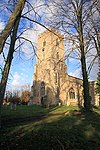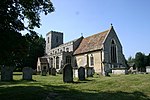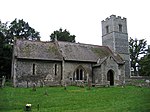
There are over 9,300 Grade I listed buildings in England. This page is a list of the 111 of these buildings in the ceremonial county of the East Riding of Yorkshire. In the United Kingdom, the term listed building refers to a building or other structure officially designated as being of special architectural, historical or cultural significance; Grade I structures are those considered to be "buildings of exceptional interest". In England, the authority for listing under the Planning Act 1990 rests with Historic England, a non-departmental public body sponsored by the Department for Culture, Media and Sport.
There are over 9,300 Grade I listed buildings in England. This page is a list of these buildings in the county of Isle of Wight.
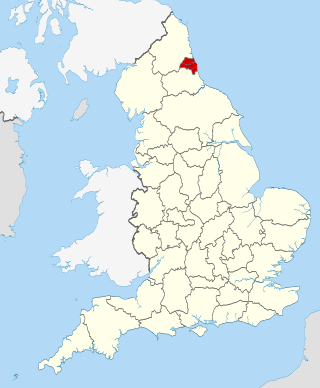
There are 75 Grade I listed buildings in Tyne and Wear, England.

As of April 2006 there were 410 Grade I listed buildings in Suffolk, England. In the United Kingdom, the term listed building refers to a building or other structure officially designated as being of "exceptional architectural or historic special interest"; Grade I structures are those considered to be "buildings of "exceptional interest, sometimes considered to be internationally important. Just 2.5% of listed buildings are Grade I." The total number of listed buildings in England is 372,905. In England, the authority for listing under the Planning Act 1990 rests with English Heritage, a non-departmental public body sponsored by the Department for Culture, Media and Sport.
North Somerset is a unitary authority in the ceremonial county of Somerset, England. In the United Kingdom, the term listed building refers to a building or other structure officially designated as being of special architectural, historical or cultural significance; Grade I structures are those considered to be "buildings of exceptional interest". Listing was begun by a provision in the Town and Country Planning Act 1947. Once listed, severe restrictions are imposed on the modifications allowed to a building's structure or its fittings. In England, the authority for listing under the Planning Act 1990 rests with Historic England, a non-departmental public body sponsored by the Department for Digital, Culture, Media and Sport; local authorities have a responsibility to regulate and enforce the planning regulations.
Taunton Deane is a local government district with borough status in the English county of Somerset. In the United Kingdom, the term listed building refers to a building or other structure officially designated as being of special architectural, historical or cultural significance; Grade I structures are those considered to be "buildings of exceptional interest". Listing was begun by a provision in the Town and Country Planning Act 1947. Once listed, severe restrictions are imposed on the modifications allowed to a building's structure or its fittings. In England, the authority for listing under the Planning Act 1990 rests with Historic England, a non-departmental public body sponsored by the Department for Digital, Culture, Media and Sport; local authorities have a responsibility to regulate and enforce the planning regulations.
West Somerset is a local government district in the English county of Somerset. In the United Kingdom, the term listed building refers to a building or other structure officially designated as being of special architectural, historical or cultural significance; Grade I structures are those considered to be "buildings of exceptional interest". Listing was begun by a provision in the Town and Country Planning Act 1947. Once listed, severe restrictions are imposed on the modifications allowed to a building's structure or its fittings. In England, the authority for listing under the Planning Act 1990 rests with Historic England, a non-departmental public body sponsored by the Department for Digital, Culture, Media and Sport; local authorities have a responsibility to regulate and enforce the planning regulations.
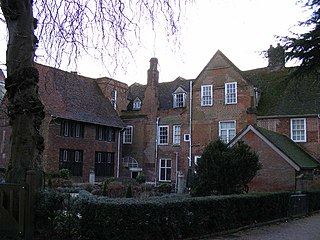
There are 11 Grade I listed buildings in Ipswich, a non-metropolitan district and the county town of Suffolk, England.

There are many Grade I listed buildings in the East Suffolk District, a district formed in 2019 from a merge of Suffolk Coastal and Waveney. There are 60 such buildings from Suffolk Coastal, and 51 from Waveney.

There are many Grade I listed buildings in Babergh, a non-metropolitan district of in the county of Suffolk in England.

There are many Grade I listed buildings in Mid Suffolk, a non-metropolitan district of in the county of Suffolk in England.

There are many Grade I listed buildings in St Edmundsbury, a former non-metropolitan district and borough in the county of Suffolk in England that takes its name from the town of Bury St Edmunds.

There are 42 Grade I listed buildings in Maidstone. The Borough of Maidstone is a local government district in the English county of Kent. The district covers a largely rural area of 152 square miles (394 km2) between the North Downs and the Weald with the town of Maidstone, the county town of Kent, in the north-west. The district has a population of approximately 166,400 in 2016.
In total there are 317 listed buildings in the city of Southampton, of which 14 are Grade I, 20 are Grade II* and the remainder Grade II.
In total there are 317 listed buildings in the city of Southampton, of which 14 are Grade I, 20 are Grade II* and the remainder Grade II.
In total there are 317 listed buildings in the city of Southampton, of which 13 are Grade I, 20 are Grade II* and the remainder Grade II.

In the United Kingdom, the term listed building refers to a building or other structure officially designated as being of special architectural, historical, or cultural significance; Grade I structures are those considered to be "buildings of exceptional interest". Listing was begun by a provision in the Town and Country Planning Act 1947. Once listed, strict limitations are imposed on the modifications allowed to a building's structure or fittings. In Wales, the authority for listing under the Planning Act 1990 rests with Cadw.
There are over 20,000 Grade II* listed buildings in England. This page is a list of these buildings in the district of Babergh in Suffolk.
There are over 20,000 Grade II* listed buildings in England. This page is a list of these buildings in the district of Forest Heath in Suffolk.
The county of West Sussex in South East England has 176 Grade I listed buildings. Such buildings are described by English Heritage, the authority responsible for their designation, as "of exceptional interest [and] sometimes considered to be internationally important". Grade I is the highest of the three grades of listed status in England: about 2.5% of the country's 374,000 listed buildings have this designation.



